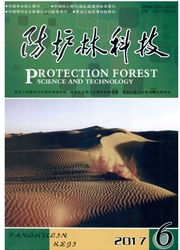

 中文摘要:
中文摘要:
根据闽北山区森林资源二类调查数据资料,选择土地利用类型和优势树种组调查因子,构建两级景观分类系统,最终确定8种森林景观要素类型。利用ArcGIS空间分析功能,分析各森林景观与地形因子之间的关系。研究结果表明:研究区以有林地为主。针叶林景观占整个研究区森林生态景观总面积的36.1 2%,呈现集中连片分布特征,是该区森林景观的基质。研究区内各森林景观随着海拔的变化呈现出明显规律的垂直分异特征,主要分布在海拔800m以下。主要森林景观分布在缓坡至陡坡之间,非林地景观随着坡度升高分布面积逐渐减少,其它森林景观均呈现先增后减特征。除阔叶林景观外均在16°~25°分布面积最大。各森林景观主要分布在坡向中阳坡、半阳坡,其中又以西坡面积最大。总体来看,森林景观在海拔和坡度上的分异特征极显著,而在坡向上的分异特征不明显。
 英文摘要:
英文摘要:
According to the forest resources survey data of Minbei mountain area, land use types and dominant tree species were selectedto build 2-classes landscape classification system and determine 8 types of forest landscape types. Using the spatial analysis functions,the relationship between forest landscape and Topography Factors was studied. The results showed that the overall landscape wasdominated by forest land. Coniferous forest landscape type accounted for 36.12% of the entire study area and presented focus and contiguousdistribution, is the matrix of the region. Distribution of 8 forest landscape types were at an elevation of below 1 000 m, and the forestlandscape types showed a certain degree of vertical zonal features with elevation changes. The main forest landscape types were distributedin gentle slope of 6 °-35°.Area of non-forest landscape type decreased with the slope rising,other forest landscape types increased first and then decreased, and reached the maxima between 16°-25°. In the terms of aspect, they were mainly distributed on sunny and semisunny slopes, especially in west slope.
 同期刊论文项目
同期刊论文项目
 同项目期刊论文
同项目期刊论文
 期刊信息
期刊信息
